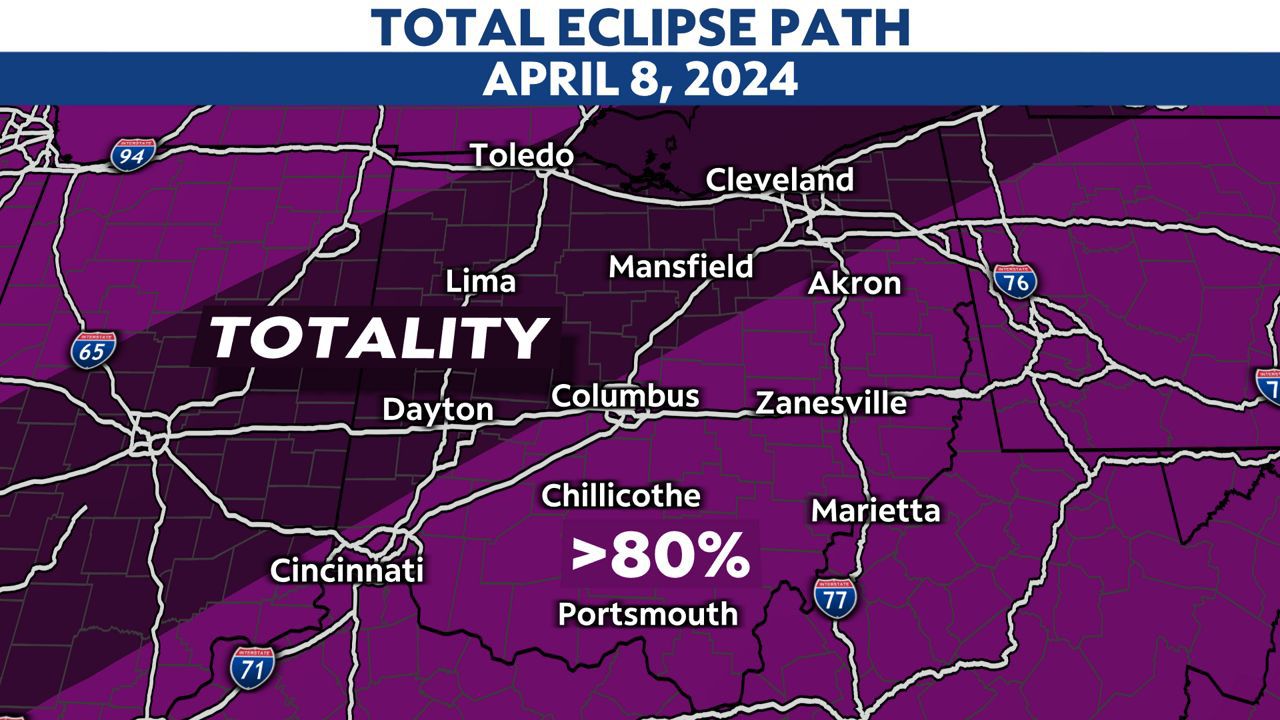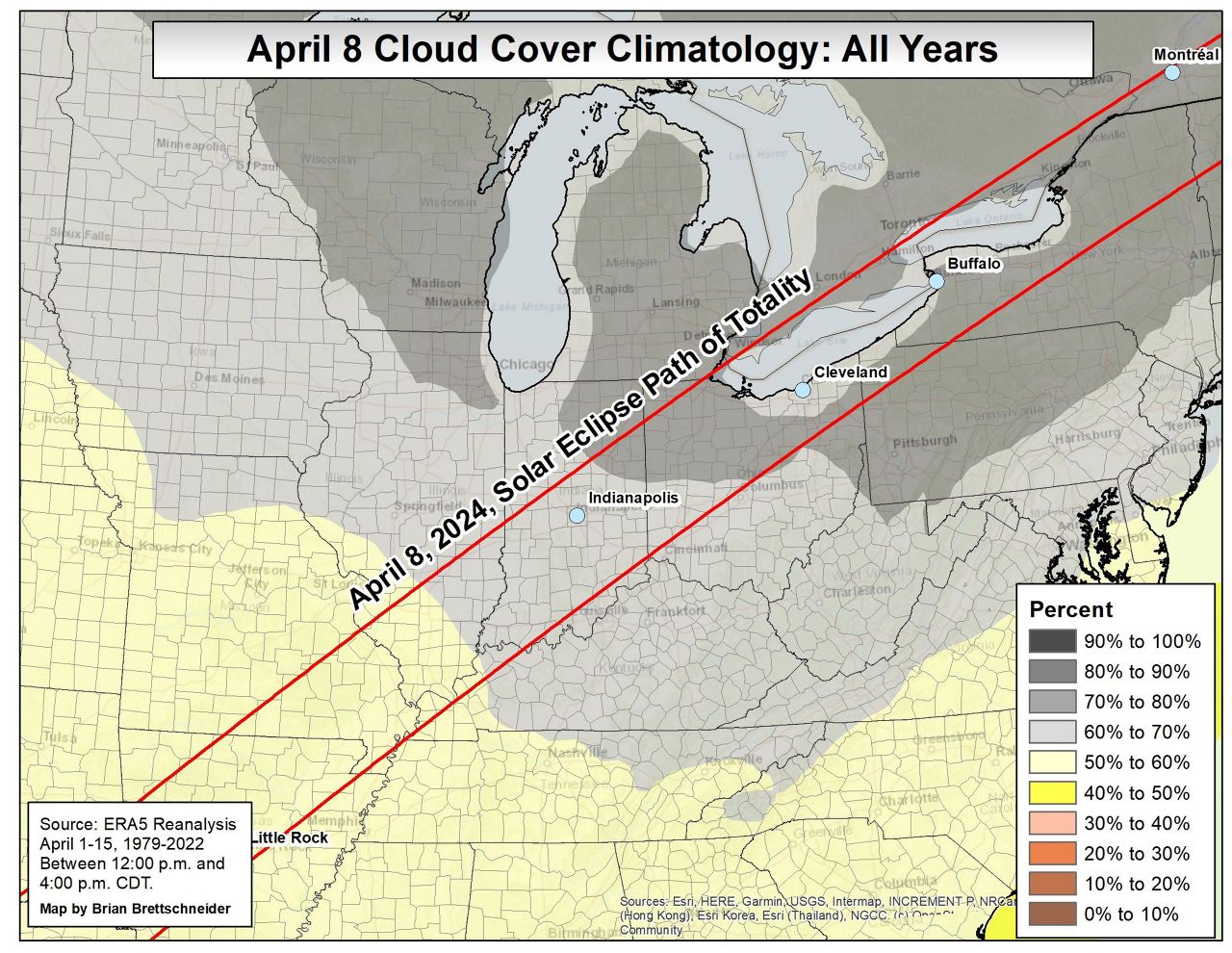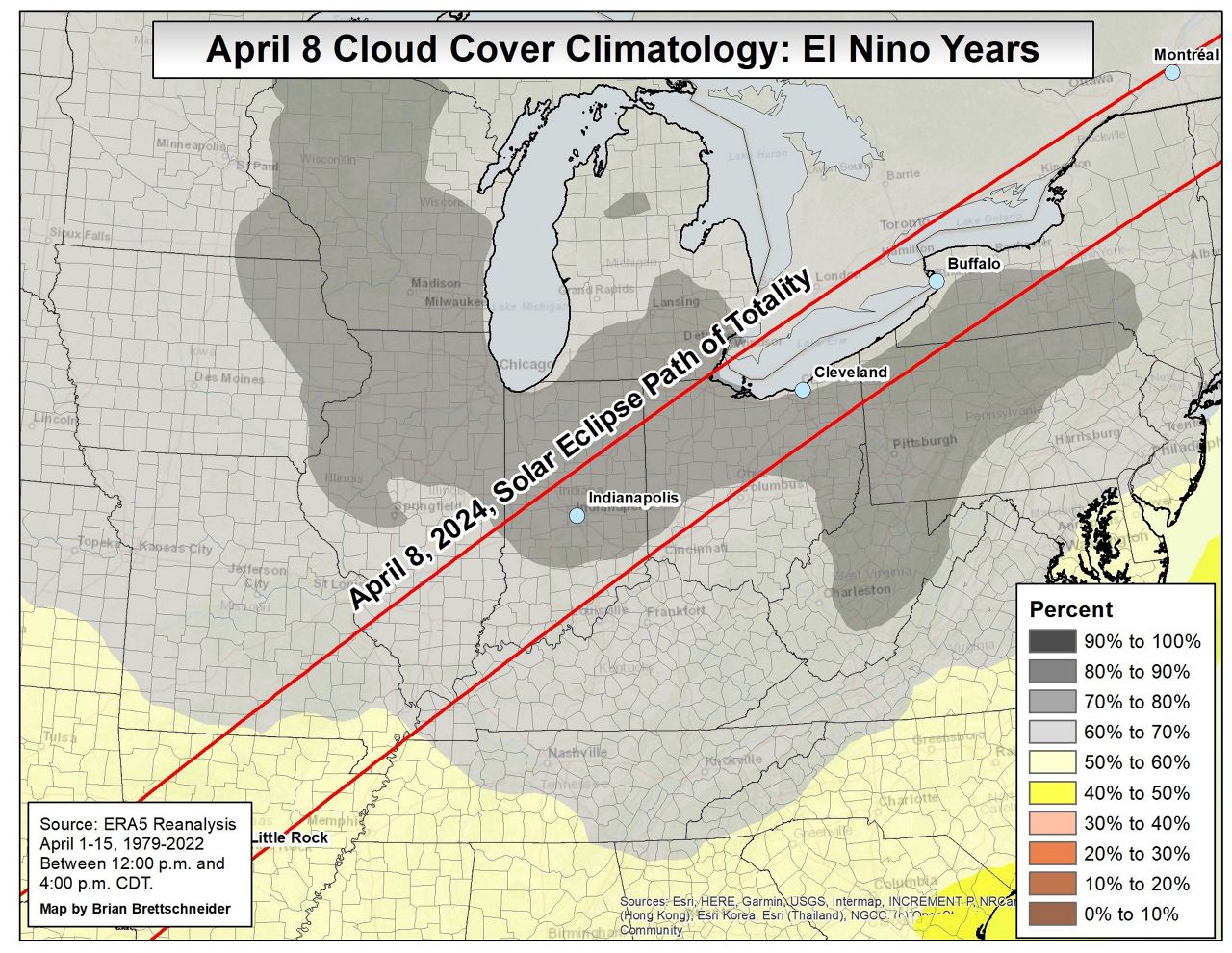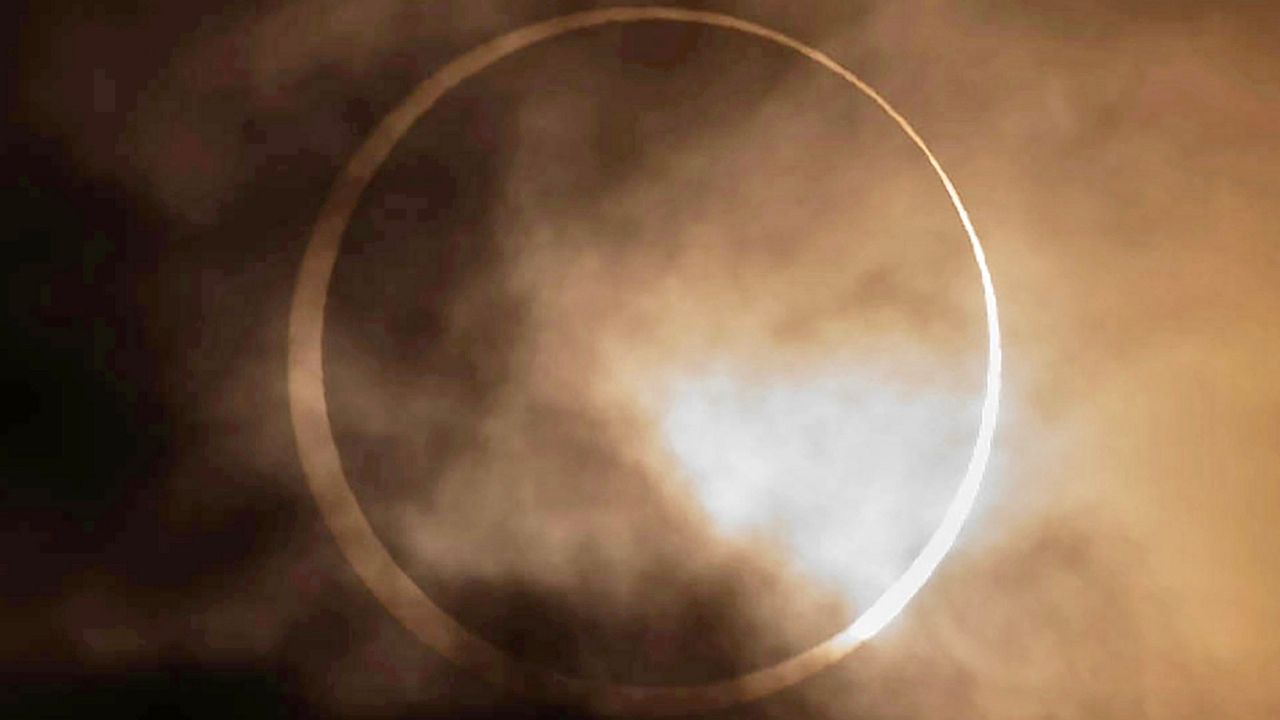An out of this world event will occur on April 8, 2024, and Ohio will have a front-row seat! Well, at least, we hope. We are talking about the total solar eclipse.
There is one minor problem that could get in the way. April is typically not the sunniest month in Ohio.
Our proximity to large bodies of water, the Great Lakes, doesn’t help our chances, as they can increase our chances for cloud cover. Perhaps we can get lucky!
On April 8, 2024, a nearly 125-mile-wide shadow from the moon will move across Ohio from the southwest to the northeast at around 2100 miles per hour.
In this path, the sun will be totally blocked by the moon for some, by nearly four minutes. Outside of this path, a partial eclipse will occur.

A total solar eclipse is an incredibly rare event. On average, one happens somewhere on the Earth only once every year and a half, but many of those are typically only visible over the oceans.
There have only been 21 total solar eclipses to have crossed the lower 48 states since the United States was formed. The last total solar eclipse that was visible in Ohio occurred almost 220 years ago, back in 1908.
If we miss this one, the next chance for Ohio will not be until 2099.
Needless to say, we are hoping for clear skies to view this event (safely, of course). But a look at Ohio’s climatology suggests the chances for cloud cover are higher than the chances for sunshine.

Looking back through the years from 1979 through 2022, between April 1 to April 15 from the hours of 12 p.m. to 4 p.m., Ohio had cloud cover between an average of 60 to 70%. The totality of the solar eclipse on April 8th will cross Ohio between 3:10 p.m. to 3:15 p.m.
Breaking this down even further by looking at years when we were in an El Niño pattern, which we are now, clouds occurred more often. Those aren’t great odds, unfortunately. In Ohio, you may have slightly higher odds, granted barely, in Cincinnati.

If you want the absolute best chances to see the eclipse without clouds, you’ll need to take a trip to southwest Texas, where the average cloud cover during that same time period is around 30 to 40%.
For those of you who will stay local, keep a close eye on the forecast as we approach the date. Keep in mind if the forecast looks clear, you can expect an incredible surge in traffic in the ‘eclipse soon’ as thousands flock to get a view of this once in a lifetime event!
Our team of meteorologists dives deep into the science of weather and breaks down timely weather data and information. To view more weather and climate stories, check out our weather blogs section.



